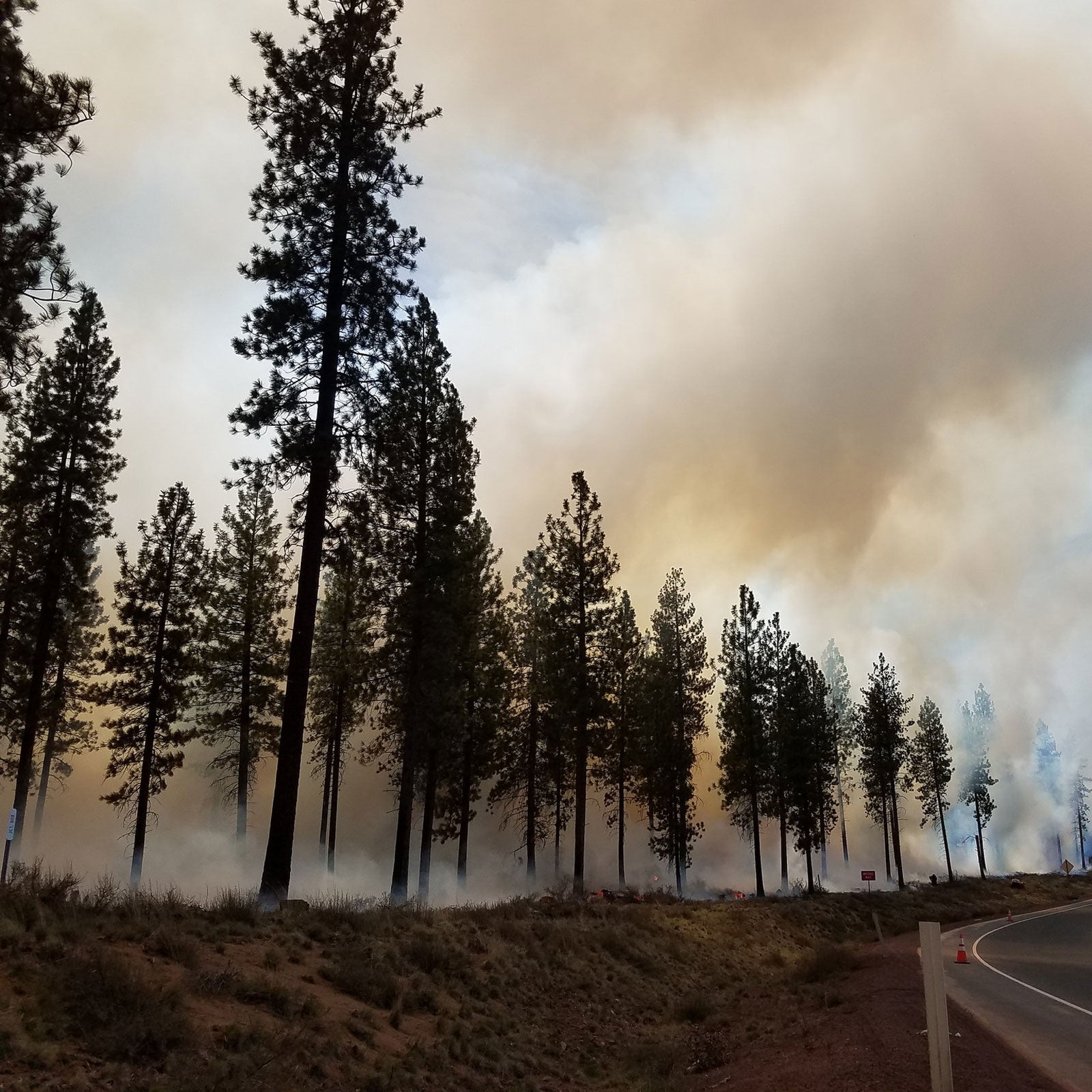The sky was yellow, the sun was red, and every time I rode my bike I came home with a gritty scrim of ash in my eyes. For a week in August, Seattle had the worst air quality ever recorded in the area. (The second worst was last August.) In fact, it had the worst air quality of any big city in the world.��
As the postapocalyptic pea soup settled in, and outdoor pools closed��and sports teams canceled practices,��I tried to decide whether��I should keep going outside. The official advice from state health departments and national lung-health organizations is usually general: something like “,” but I wasn’t sure what that meant. Should I be doing push-ups in my living room with the windows closed and an air filter cranking? Would a few days of running outside, sucking down smoke, really do much damage?
Fires are still burning from Alaska to Arizona, and the National Interagency Fire Center reported across the West through September. As the blazes rage on, in line with��, I’m not alone in my question about exercise and exposure. The Washington state��, for example, saw more than 1,600 visits a minute during the smokiest��weeks—compared to its��average 1,100 visits a day��before this summer’s wildfires.��
Matt Kadlec, an air-quality toxicologist at the Washington Department of Ecology, says it’s hard to give concrete answers. There are many human variables, and according to Kadlec, researchers are just beginning to look into the topic more deeply. He says there’s been an uptick in studies about the health impacts of wildfires and smoke, especially in the past five years, but a lot of it is still��inconclusive, especially because wide-ranging, variable wildfires are hard to research. For example, a�� from wildfire epidemiologist Colleen Reid surveyed existing research and found a direct correlation between a population-wide increase in respiratory illness and wildfire smoke, but she concluded that “more research is needed to clarify which causes of mortality may be associated with wildfire smoke, whether cardiovascular outcomes are associated with wildfire smoke, and if certain populations are more susceptible.”
The most common metric for pollution is the EPA’s air-quality index (AQI), which is calculated from four major air pollutants regulated by the : ozone, particle pollution, carbon monoxide, and sulfur dioxide. Kadlec says that those calculations are based on human-generated air pollution, which tends to have a slightly different composition than wildfire smoke, but they track closely enough that the AQI offers a good metric for measuring the risks posed by air quality.
Atmospheric scientist Ranil Dhammapala, who runs the , says that particulate pollution—particularly fine particles smaller than 2.5 micrometers in diameter, commonly referred to PM2.5—is most concerning. Once those tiny particles hit your lungs, they start to break down cells. Resulting health effects��can range from a sore throat or difficulty breathing to respiratory diseases like chronic obstructive pulmonary disease (COPD) and chronic bronchitis. From there, they can enter your bloodstream and potentially cause heart attacks and arrhythmia. ��
Personal health and genetics make a big difference in how your body responds to the same amount of pollution. The World Health Organization says that��25 micrograms per cubic meter of PM2.5 is the upper limit of what’s safe for people who aren’t particularly sensitive. Children, the elderly, and people who suffer from asthma or COPD have a lower threshold.
You can track levels of PM2.5, and the four other pollutants the EPA uses to gauge the AQI, on the federal site��. Kadlec says that PM2.5 levels below 12 are considered good, but��that above 20 (which equates to moderate on the AQI scale), he’d��scale back on running or biking outside. Regardless of the amount of pollution, the longer your��exposure, both on a daily and a long-term level, the greater your��risk.��
A�� published in Preventive Medicine looked at the break-even point for exercising in urban air pollution, and found that, both generally��and in the short term, some exercise is better than no exercise. Researchers �徱���’t control for genetics or other personal factors that can change susceptibility, but they found that when PM2.5 is at 50 micrograms per cubic meter—well into the EPA’s unhealthy zone—you won't cancel out the cardiovascular benefits of exercise until you've spent ten��hours walking or five hours biking. The harder you’re breathing, the less��time you should spend exercising outside, Kadlec says. If you’re hiking uphill or running, you’ll hit that break-even point much sooner. But short periods of activity should be OK��up until the 50-microgram level. Kadlec also recommends taking periodic clean-air breaks throughout the day, ideally by keeping a room in your house clean, sealed off from the outside, and filtered with a high-efficiency particulate air filter.
If you have to work outdoors, Kadlec recommends wearing a sealed dust mask rated N95—meaning it filters 95 percent��of fine particles—or higher, and��warns that bandanas and medical masks don't provide any kind of filtration.��And��pay attention to your��upper respiratory system, Kadlec��says, because the early health impacts of pollution are physically obvious. “We warn people that if they’re starting to cough, or if they have a headache, sore throat, or runny nose, to try to reduce their exposure. Smoke can push disease processes along, even if you feel healthy,” he says.��
In Seely Lake, Montana, where ER visits for respiratory problems more than doubled during the��long,��smoky fire season of��2017, Christopher Migliaccio, a professor at the University of Montana, started following residents as part of the nation's��first long-term wildfire health-effects study. He’ll continue doing so over the next few years, to try to gauge long-lasting��impacts and offer people better advice and tools to help them avoid adverse health impacts.��Dhammapala, who has been tracking historic smoke exposure, says that the reports he and his team have��received from the fire services predict more acres burning��in the immediate future. Given that forecast,��they’re trying to model how smoke distribution might grow and change, so people can make informed��decisions about their exposure.��“It would be really surprising, scientifically speaking, if it �徱���’t have long-term effects.��But that work just hasn’t been done yet,” Kadlec says.


